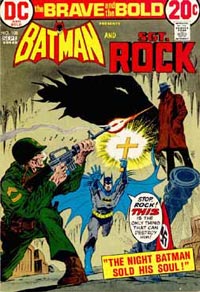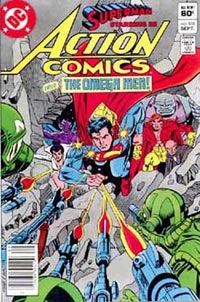How I Learned to Stop Worrying and Love Comics Again
By Philip Schweier
January 16, 2007 - 06:10
How often it has been said the sense of wonder we experience as children is lost as we mature. I'd like to believe I've overcome that problem, but other people probably know better.
 |
It's inevitable that the most popular characters are going to be appearing in multiple titles. Wolverine has his own book, as well as being an X-Man and an Avenger. For someone who has a reputation for being something of a loner, maybe he's being spread a bit thin. Greg Rucka had the right idea when he was writing the first few issues of Wolverine, that those stories took place between X-Men adventures.
Which is how most readers regarded the old self-contained stories of 1970s. Once in a while, there might be a reference to what had come before. Usually, it amounted to our hero facing the surprise villain: "You! I thought you were DEAD!" And then the editor would refer us to a story from 30 or 40 issues ago.
 |
But when Superman introduced the Omega Men to Robin and the gang, he commented on being at half-power, and I remember thinking, "Well, yeah, why not? And how come he's not at 50 percent in Superman, DC Comics Presents and Justice League?" I really felt someone had dropped the ball in terms of continuity.
In the years since, it has pleased me to see continuity become a stabilizing thread throughout the various comic book universes. I felt that some of the creative chaos was being reigned in. But sometimes too much of a good thing is a bad thing.
 |
Like I said, a reasonable idea taken to excess. Just like continuity in recent years.
Perhaps the solution isn't continuity, but CONSISTENCY. What's the difference? Well, having Bruce Wayne drive a Porsche in one comic, and a Jaguar in another might be regarded by some anal-retentive know-nothings as a continuity violation. But given his wealth, it reasonable to assume he has multiple high-end automobiles available. So it's at least consistent.
 |
Characterization should be consistent, and the titles can be used as a venue for the type of story told. Action Comics can be just that: emphasis on action. The Superman title can be more character-driven, exploring the "Man" of Steel.
True continuity is found by remaining true to the characters and concepts as they have evolved over the years. Not every detail in a story need relate directly to something that has come before. If it did, how would you explain that Bruce Wayne hasn't seemed to age much, whereas Dick Grayson has grown from a pre-teen circus boy to an adult Nightwing?
In the film Field of Dreams, actor Ray Liotta portrayed baseball player Shoeless Jo Jackson. Liotta suggested he learn to pitch and catch left-handed, as the real Shoeless Jo Jackson did, to add a degree of authenticity to the movie. Director Phil Alden Robinson then pointed out that a bigger flaw in the film in terms of authenticity is that Shoeless Jo Jackson was DEAD!
My point is that some things in the world of fiction should simply be taken on faith. Realism and accuracy are fluid, and subject to the immediate story at hand. Minute details shouldn't be allowed to detract from the overall experience of the narrative. Otherwise, why read comics in the first place? Babies don't come from Krypton, radioactive spider bites will not give a person spider-like abilities, and people don't run around cities wearing tights and a mask, fighting crime.
Praise and Adulation? Scorn and ridicule? Email me at philip@comicbookbin.com.
Related Articles:
Continuity and the DCnU
Hawkman's Continuity Explained
Continuity and the Doom Patrol
Crisis in the Infinite Continuity
